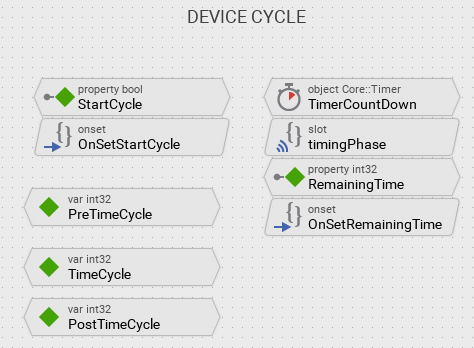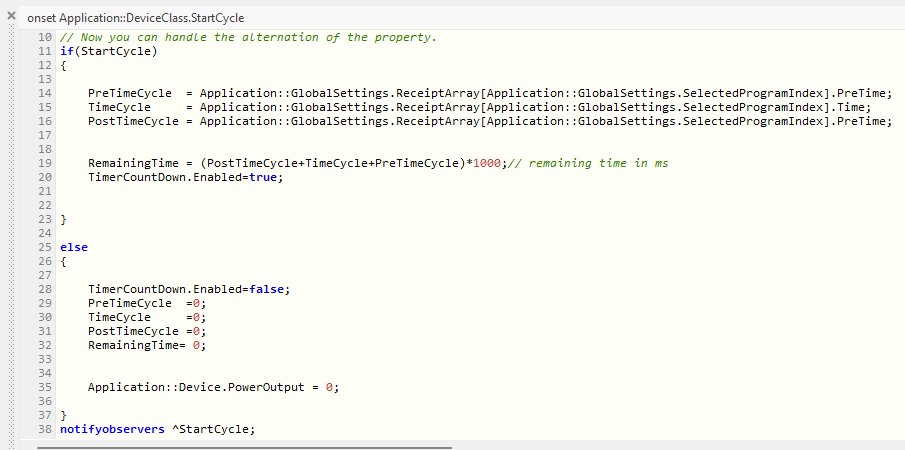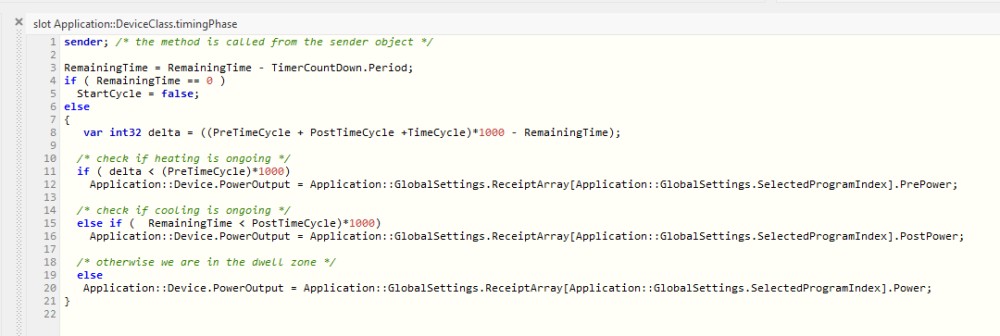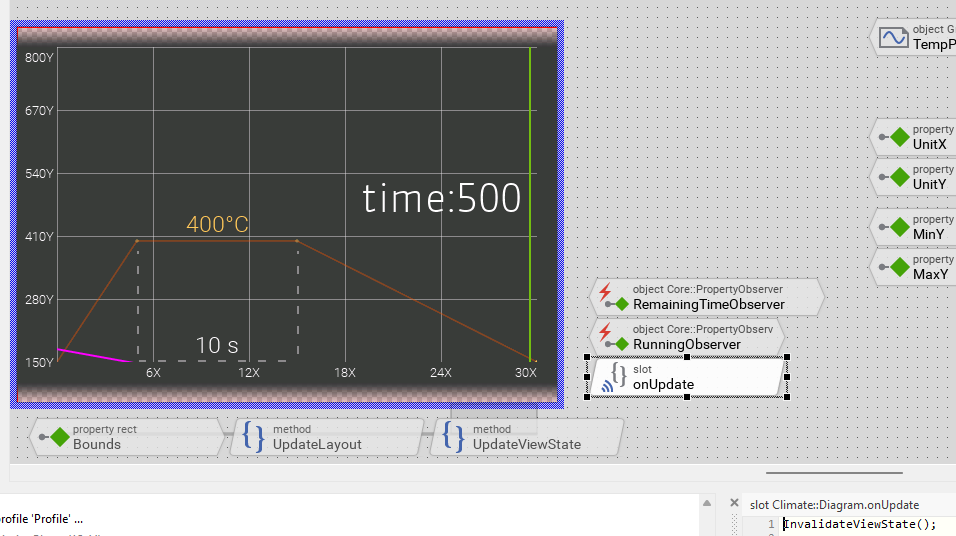Hello,
I'm developing a diagram based on the Climate Cabinet example.
The diagram on the x axys is showing the time of a machine cycle.

When the cycle starts, the on set method of the Start Cycle loads on the 3 phases time variable the program selected phases.
Then the Remaining Time property gets loaded with the sum of the three phases in ms, and the count down timer is started.

The property remaining time is updatated by a timer, if remaining time is equal to zero, the StartCycleProperty is set to false, instead if not, a delta is calculated between the remaining cycle time and the total time, to get the elapsed time, and set the power output accordingly.
Te Remaining Time (in ms) is updated first, with the remaining time in ms being subtracted by the amount of ms counted by the period of the timer, because the timer trigger every Timer.Period ms so from the remaining time is subtracted the just elapsed ms, this gives a sensitivity intervalof the Timer.Period in ms.

The Diagram is updated by a Property observer that updates the graph when the remaining time is modified, and call the Update method witch invalidates the view,

With this implementation i'm expecting that when i modify the Timer.Period that updates the diagram. I'll get a refresh rate likely to be in ms every timer trigger.
I'm also printing the time on the diagram, only when the timer.period is set to 100 ms the time is correct( measured with a side stopwatch), when i set it to 10 ms,the total time is not true to the stopwatch time.
Cannot find the cause of this, i think theoretically wise the process is correct.